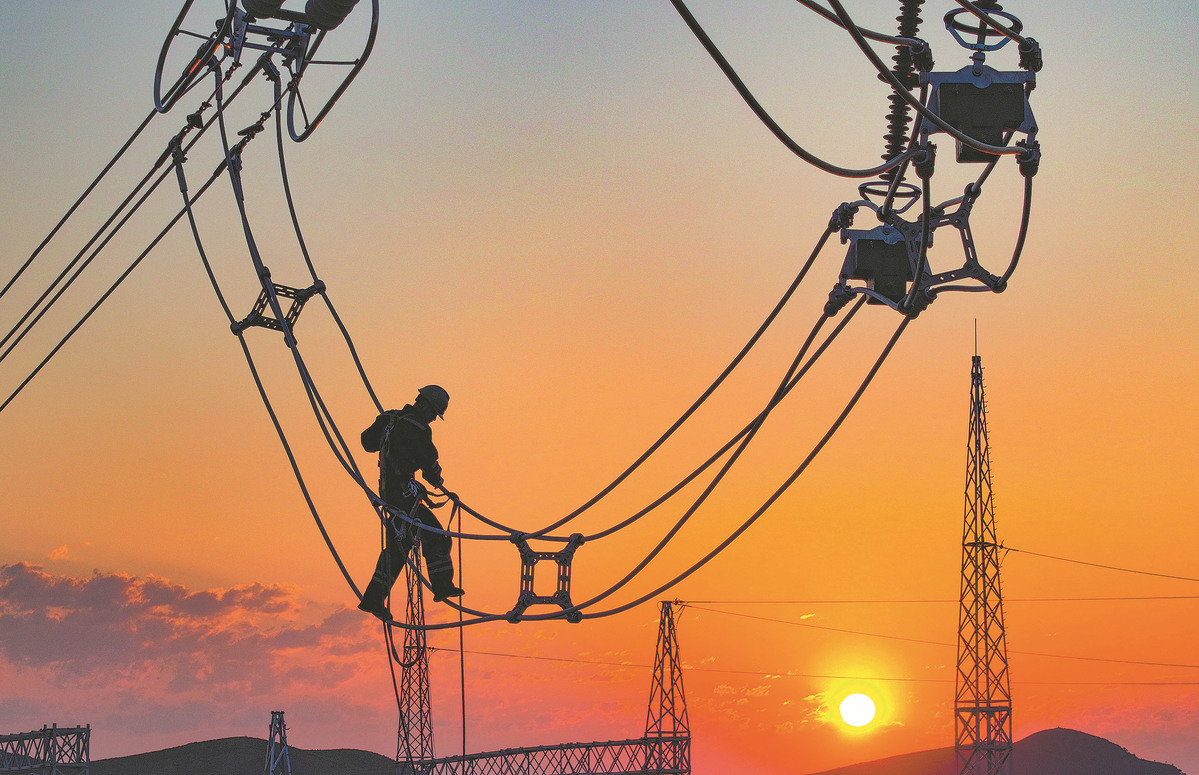Nation speeding up green shift to clean energy future
Renewables' capacity forecast to double by 2030 to exceed 3,000 GW


China's renewable energy capacity is projected to double by 2030, reaching over 3,000 gigawatts, a significant expansion that underscores the nation's accelerating shift toward clean energy and its pivotal role in global decarbonization, according to a think tank.
China is expected to add 430 GW to 500 GW of new renewable energy capacity this year, driven by an accelerating energy transition, full release of industry capacity, higher local development demands, and increasing international trade barriers, according to the China New Energy Power Generation 2025 report, released by the State Grid Energy Research Institute in Beijing on Wednesday.
New energy is expected to maintain an average annual growth of 300 GW during the 15th Five-Year Plan period (2026-30), said the report.
"China's renewable energy sector is poised for explosive growth, as the nation intensifies its drive toward a clean energy future, with the adoption of renewable energy in the country continuing its momentum over the past few years," said Ye Xiaoning, a senior engineer at the new energy department of the institute.
"Renewable power generation has maintained rapid growth, breaking through 18 percent of total generation and becoming the main contributor to electricity increment," said Ye.
Data released by the National Energy Administration show that China's renewable energy generation reached 1.84 trillion kilowatt-hours in 2024, a 25 percent increase year-on-year.
This accounted for over 60 percent of the total electricity generation growth and represented 18.5 percent of the country's total power output, an increase of nearly 3 percentage points from the previous year, it said.
As many as 12 provincial-level regions across the country saw renewable energy account for over 20 percent of their total electricity consumption, with Qinghai and Gansu provinces, Ningxia Hui, and Inner Mongolia autonomous regions exceeding 40 percent.
Ye attributed this surge to the continuous strengthening of grid connection and transmission projects, which have significantly enhanced the ability to optimize renewable energy resources across wide areas.
"Grid companies have continuously strengthened new energy grid connection and transmission projects, centrally commissioning a batch of provincial and interprovincial/interregional transmission projects, and completing and operating multiple key provincial transmission projects that enhance new energy absorption capacity," Ye said.
By the end of 2024, China had completed 42 ultrahigh voltage transmission lines, forming an extensive and robust grid infrastructure that has provided strong impetus for China's energy transition and sustainable development, according to the institute.
Cross-regional and cross-provincial power transmission continued to grow, with interregional transmission last year up 9 percent year-on-year and interprovincial transmission rising 7.1 percent year-on-year.
According to the China Electricity Council, the construction of provincial-level spot electricity markets is also accelerating across the nation.
State Grid Corp of China and China Southern Power Grid completed the nation's first cross-regional green power trade in March, involving the transmission of 52.7 million kWh of green electricity from the Guangxi Zhuang autonomous region and Yunnan province in the country's southern and southwestern region to the eastern metropolis of Shanghai, establishing a traceable link for green power sourcing and trading across different grid operating areas.
Ye said the development of electricity markets adapted to the increasing share of renewable energy has accelerated, as China is pushing for a unified national electricity market and refining market mechanisms to facilitate cross-provincial absorption of renewable energy.
The country's first energy law, which took effect on Jan 1, has also played a strategic guiding role in China's sustained development of renewable energy, Ye said.
This legislation provides the essential framework for fostering a high proportion of clean energy in the national mix, actively promoting the growth and diversified deployment of various renewable sources, he added.




































